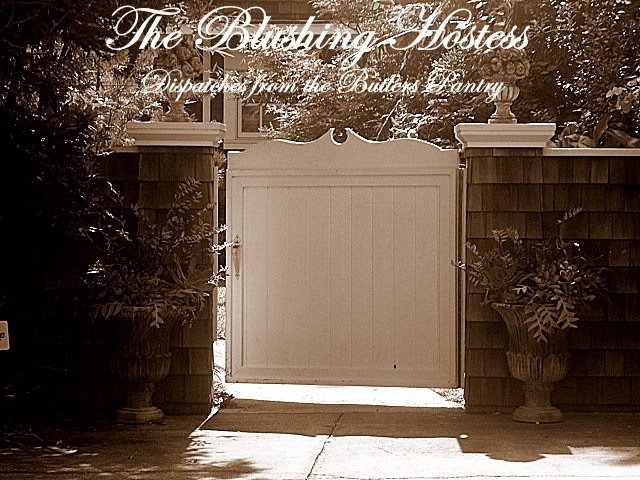
This information may matter, then again...
However, if you are using place cards, you find convention helpful, or you are indeed seating accomplished individuals and/or guests of honor at your table, you may need this information; lest you banish the creator of Post-It notes (an obvious genius, worthy of honorable status at my table) to a dining wasteland usually reserved for the newly out of jail for that icky little insider trading bit. Ah-hem.
Anyhow, off we go. It's all very complicated so try to follow my (usually quite deficient) math skills here. (Keep in mind that these rules are for seatings with equal numbers of men and women and in amounts not divisible by four: In parties of eight, twelve, sixteen, the host and hostess/co-host cannot sit opposite without a male or female next to another male or female. )
1. For dinners not divisible by four: The host sits at the head of the table. The hostess or co-host at the opposite end of the table.
2. For dinners divisible by four: The hostess/ co-host moves one place to the left, the man on her right is then seated at the end of the table opposite the host.
3. If there are several round tables, the host, hostess, and guest-hosts seat themselves at separate tables, always facing into the room.
4. Regardless of the shape of the table, the places to the right of the host and the hostess are for guests of honor: The female to the host's right is the female guest of honor, and the man to the right of the hostess/ co-host is the male guest of honor. I remember this by that old Catholic school thing: At his right hand...
5. The second ranking woman sits to the host's left and the second ranking male on the hostess's left.
6. If there are guests of official status, this couple are default honorees and such couples share equal rank status.
7. If there are no official guests, the place of honor is bestowed to a pair of swells or givers (but in truth, people in a prestigious position in the community).
8. At any level of formality, when you are giving a dinner on behalf of others, they are to be seated next to the host and hostess.
In answer to one last readers query: In my home, my Husband and I are seated at either end of a rectangular table. I establish the "head" of the table in each new home as the end furthest from the kitchen. I sit at the opposite end, closest the kitchen (and nearest the fire extinguisher therein) unless there are four dining very casually, in which case all are seated across and the head and end left vacant, for ease of conversation.

The White House seating chart for circular seating in the Blue Room, President John F. Kennedy's White House state dinner in honor of Andre Malraux, May 16, 1962.




8 comments:
Terrific post! I pity the poor social secretary who ever had to juggle gradations of precedence among, say, a table full of titles.
Wonderful post...
Soooo nice to meet you! and thanks for your comment. I look forward to coming back to your wonderful blog for a nice long visit.
Susan
Excellent post, very informative, just loved it!
Great post, thank you! In my position we often have officials at parties (the Speaker of the House, Sen. Diane Feinstein, Fmr. Sec. of State Schultz, Pres. Obama, etc.), and it took a bit of research on my part but I finally got it down to where they all should go when we seat a dining room of 10 round tables! There is something really wonderful about formality that has all but gone missing in our modern world. Thanks for sharing!
Nicely done! I hesitated to continue reading when you mentioned math, but I persevered and absorbed the overall concepts. I think seating guests at dinner parties can be extremely challenging, especially when multiple tables are involved.
I enjoyed your post on Thomas Jefferson's hosting style. Absolutely fascinating reading! Thank you for the research you do and for the always-stylish presentation.
Regards,
Bill
Oh this was so fun to read, even with the math. The seating charts for the round tables look like snowflakes...silly...but I couldn't help noticing!
Post a Comment